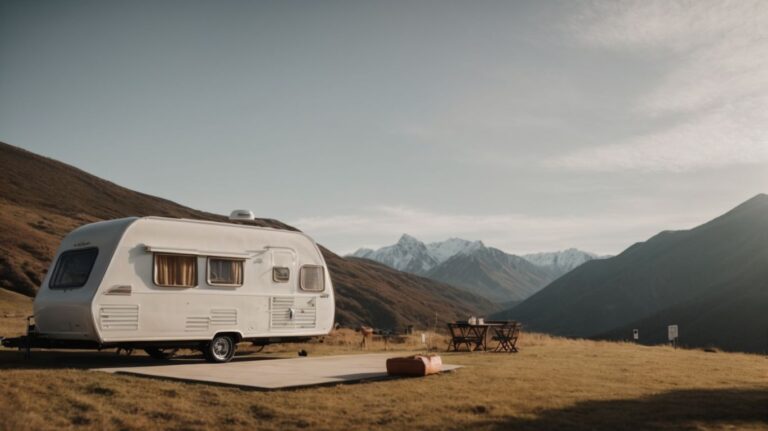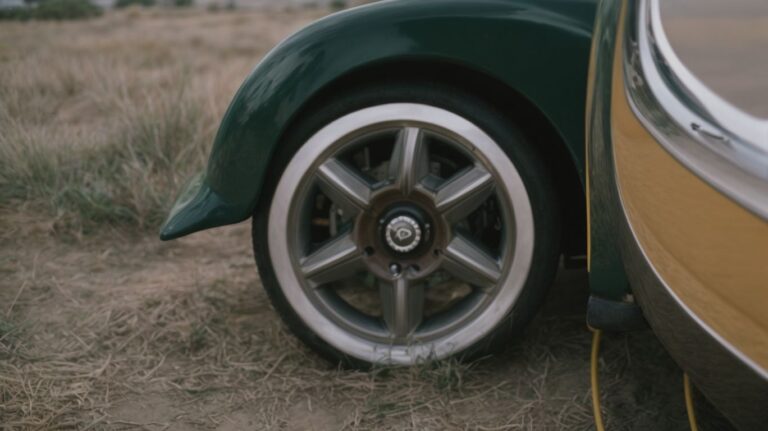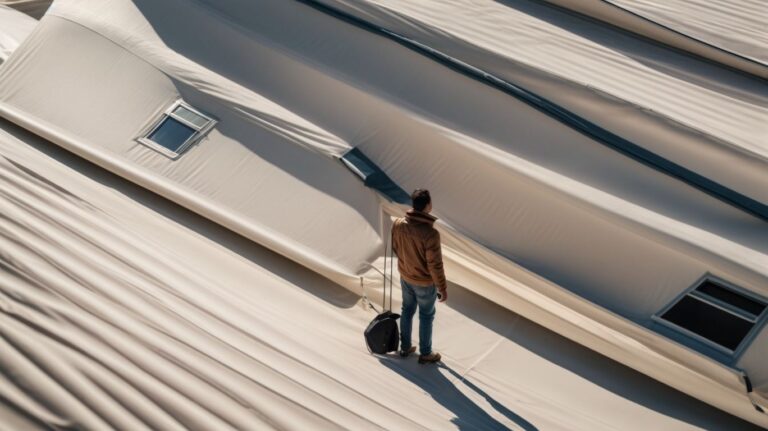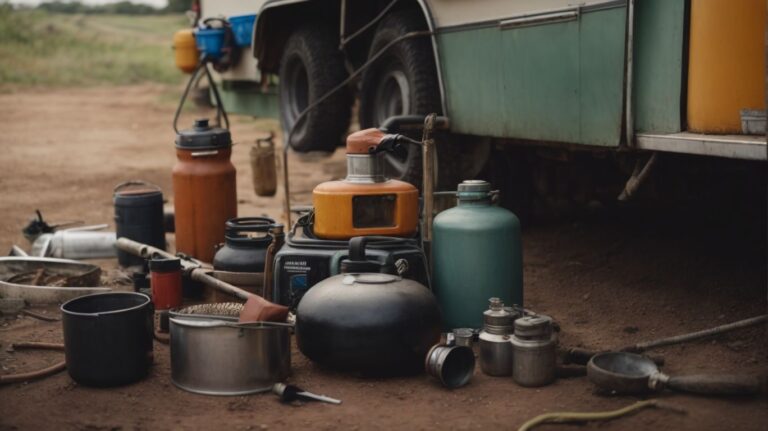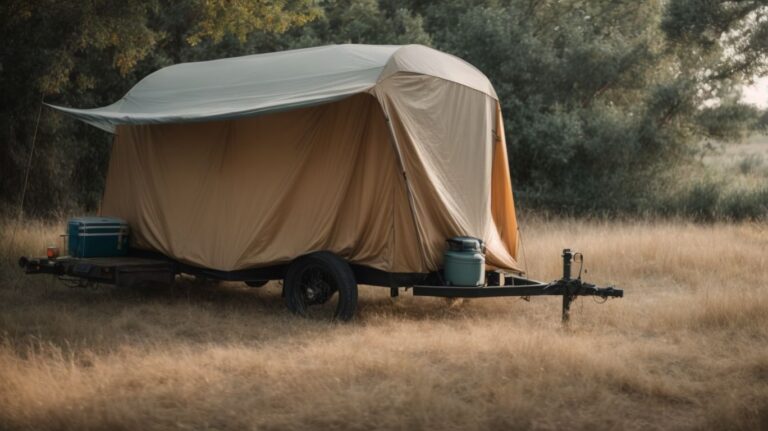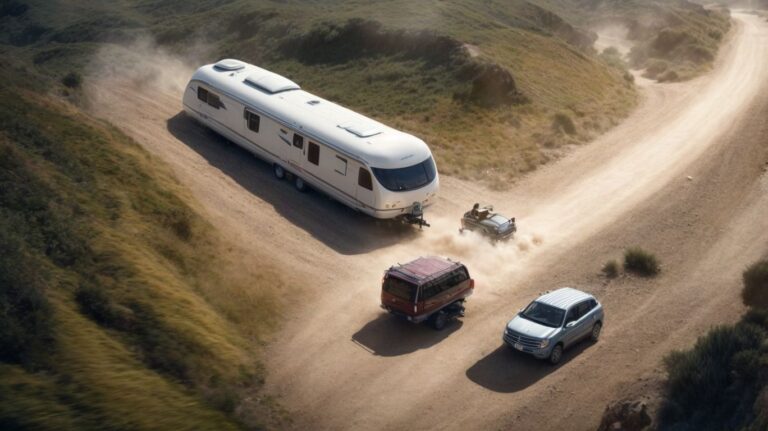Addressing Stability Issues: Why Does My Caravan Wobble?
Are you experiencing a wobbling sensation in your caravan while on the road?
We explore the common causes of caravan wobbling, including issues with weight distribution, tire pressure, suspension systems, and wind conditions.
Learn how to check for wobbling in your caravan and get practical tips on how to fix and prevent it to address stability issues for a smooth and safe journey.
Key Takeaways:
What Causes a Caravan to Wobble?
Caravan wobbling can be attributed to various factors such as improper weight distribution, incorrect tire pressure, compromised suspension system, and adverse wind conditions.
One crucial factor contributing to caravan instability is the weight distribution. If the weight is not evenly distributed across the caravan, especially with more weight towards the rear or one side, it can lead to swaying and wobbling.
The tire pressure plays a significant role in maintaining stability. Incorrect tire pressure can cause uneven wear and affect how the caravan responds to road conditions.
The suspension system also plays a key part; worn-out shocks or springs can magnify wobbling. Furthermore, wind conditions can exacerbate instability, especially when driving in crosswinds, causing the caravan to sway unpredictably.
Weight Distribution
The weight distribution of a caravan is crucial for maintaining stability while towing it with a suitable tow vehicle equipped with stabilizer bars and axle stands.
Motion Activated RV Step Lights, 10 LED Battery Operated Motorhome Motion Sensor led Light Strip, Magnetic Night Light Bar for Motorhome Travel,Travel Trailers, Camper (2 Pack)
- 【Infrared Induction Motion Detection】Motion sensor light on the PIR sensor can detect human movement, 10 feet once your approach is detected, the rv step lights will automatically turn on in the dark, in the absence of detected motion or other light sources, 18 seconds after the automatic shutdown, a large degree of power savings and improved durability.
Camco TST MAX RV Toilet Treatment Drop-INs - Control Unwanted Odors & Break Down Waste and Tissue - Safe Septic Tank Treatment - Orange Scent, 30-Pack (41183)
- Toilet Deodorizer With Reactive Odor-Eliminating Technology: Experience a powerful RV odor eliminator that stops RV black tank odors for up to 7 days. Just (1) toilet drop in treats camper toilets with up to a 40-gallon tank.
THANSTAR Collapsible Dish Drying Rack Portable Dinnerware Drainer Organizer for Kitchen RV Campers Travel Trailer Space Saving Kitchen Storage Tray
- 【Food Grade Material】Made from eco-friendly PP+TPR material that is BPA Free and Food-Grade. The flexible material allows the dish strainers for kitchen counter to collapse flat for easy space-saving and storage, making the most of your kitchen countertop.
Camco RhinoFLEX 20-Ft RV Sewer Hose Kit - Features Clear Elbow Fitting w/Removable 4-in-1 Adapter - Connects to 3” Slip or 3”/3.5”/4” NPT Threaded Sewer Connection (39742)
- Superior RV Tank Dumping: Streamline RV holding tank dumping with Camco’s RhinoFLEX 20' Camper Sewer Hose Kit. Built tough & flexible, this all-inclusive RV septic hose system provides simple & effective tank dumping on your camping adventures.
Camco Tastepure RV Water Filter - New & Advanced RV Inline Water Filter with Flexible Hose Protector - GAC & KDF Water Filter - Made in USA - Camping Essentials for Fresh Drinking Water (40043)
- Advanced 6-Step Filtration Technology: Experience the extraordinary power of Hex-Flow Technology & its remarkable 6-step filtration process. Every layer works together to provide you with water that is exceptionally clean.





Proper weight distribution ensures that the caravan’s weight is evenly distributed across the tow vehicle’s axles, reducing the likelihood of swaying or fishtailing during transportation.
Stabilizer bars play a key role in minimizing lateral movement, enhancing control and reducing the impact of crosswinds.
Axle stands help support the caravan’s weight and prevent excessive stress on the tow vehicle’s suspension system, contributing to a smoother towing experience.
By investing in these towing accessories and paying attention to weight distribution, caravan owners can enjoy safer and more stable journeys on the road.
Tire Pressure
Maintaining the correct tire pressure in a caravan is essential to prevent issues like caravan sway, especially when carrying heavy accessories secured with Ratchet straps.
Proper tire pressure plays a crucial role in distributing the weight of the caravan evenly, minimizing the risk of swaying or fishtailing while on the road. When heavy accessories are added to the caravan, such as bikes or kayaks, this can alter the weight distribution and affect the overall handling of the vehicle.
By using Ratchet straps to secure these heavy loads, you ensure that they are tightly fastened to prevent any movement during travel. This not only enhances safety but also reduces the chances of sway caused by shifting cargo.
Suspension System
A well-maintained suspension system in a caravan helps reduce wobble and vibration, with features like shock absorbers playing a critical role in enhancing stability.
Proper maintenance of the suspension system is essential to ensure that the caravan’s wheels maintain optimum contact with the road surface, thereby minimizing swaying and bouncing. By absorbing the impact of bumps and uneven terrain, shock absorbers prevent excessive up-and-down movement, resulting in a smoother and more controlled ride.
Components such as springs, bushings, and struts work in harmony to distribute weight evenly across the chassis, preventing uneven pressure that can lead to instability. The synergy of these elements not only improves handling but also enhances the overall driving experience, especially in challenging road conditions.





Wind Conditions
Adverse wind conditions, especially side winds, can impact caravan stability, highlighting the importance of electronic stability control systems to mitigate the effects of wind-induced wobbling.
When caravanning, encountering strong side winds can create a high-risk scenario due to the large surface area of a caravan, making it prone to swaying uncontrollably. The instability caused by these winds can lead to dangerous situations, such as losing control of the vehicle or even tipping over. To counteract these risks, modern caravans are equipped with advanced electronic stability control systems that utilize sensors to monitor the vehicle’s movements. These systems work by applying selective braking to individual wheels and adjusting engine power to maintain stability, counteracting the destabilizing effects of wind gusts.
How to Check for Wobbling in Your Caravan?
Checking for wobbling in your caravan involves conducting a thorough visual inspection and a test drive to identify any signs of instability.
During the visual inspection, make sure to check the tires for uneven wear, as this could indicate alignment issues. Inspect the suspension system for any signs of damage, such as leaking shocks or broken springs. Pay attention to the hitch connection to ensure it is secure and in good condition.
When conducting the test drive, drive at various speeds and note if there is any swaying or pulling to one side. Test the brakes to see if the caravan stops smoothly without any jerking motions. Listen for any unusual noises that could indicate mechanical problems causing the wobbling.
Visual Inspection
Performing a visual inspection of your caravan involves checking key components such as corner steadies to ensure structural integrity and stability.
Start by examining the corner steadies, verifying that they are securely fastened to prevent any movement while the caravan is stationary. Inspect the bearings and wheel arches for signs of wear and tear, as these can lead to instability while towing. Check the chassis for any signs of rust or corrosion, which can compromise the overall strength of the structure.
Ensure that all screws and bolts are tightened properly, especially those connecting the corner steadies to the caravan frame. Consider using a level to check if the caravan is sitting evenly, as any imbalance can result in wobbling during transit.
Test Drive
Conducting a test drive of your caravan allows you to assess its stability and detect any wobbling issues, utilizing features like a motor mover for maneuverability.
While embarking on a caravan test drive, it is crucial to take note of the road conditions and surroundings for a comprehensive evaluation. Begin by powering up the motor mover, a valuable tool aiding in precision movements and adjustments, especially in tight spots. Once on the move, pay attention to how the caravan responds to turns and changes in speed, as this can reveal any potential instability or wobbling effects. Utilize the motor mover to test different driving scenarios, including uphill and downhill slopes, to gauge the caravan’s overall handling and balance.





How to Fix Wobbling in Your Caravan?
Addressing wobbling in your caravan involves adjusting weight distribution, checking and adjusting tire pressure, inspecting and repairing the suspension system, and using stabilizing devices for enhanced stability.
One crucial aspect of rectifying wobbling issues in a caravan is to ensure proper weight distribution. By redistributing the cargo load evenly, you can significantly improve the overall balance of the vehicle, minimizing swaying movements. Regular tire pressure checks are essential to maintain optimal stability. Incorrect tire pressure can lead to uneven wear and compromise traction, affecting the caravan’s stability during travel.
Inspecting the suspension system for any signs of damage or wear is also vital. A well-maintained suspension system plays a key role in minimizing vibrations and ensuring a smoother ride. Investing in stabilizing devices such as sway bars or stabilizers can further enhance the overall stability of your caravan, especially in windy conditions or when passing large vehicles on the road.
Adjust Weight Distribution
Correcting wobbling in your caravan requires adjusting weight distribution to optimize stability, utilizing the tow vehicle and stabilizer bars for balanced towing.
Regarding adjusting weight distribution for your caravan, the key is to ensure that the load is evenly distributed on both sides of the vehicle. This is crucial for maintaining control and reducing the risk of sway.
Tow vehicles play a significant role in this process, as they are responsible for pulling the caravan and must be equipped to handle the weight. Using stabilizer bars can help minimize sway by distributing the weight more evenly across the entire setup.
Check and Adjust Tire Pressure
Ensuring optimal tire pressure in your caravan is vital to prevent wobbling and caravan sway, requiring regular checks and adjustments for proper tire maintenance.
Incorrect tire pressure can lead to uneven wear on the tires, reducing their lifespan and compromising safety on the road. When tire pressure is too low, there is an increased risk of overheating and potential blowouts, especially during long journeys. On the other hand, overinflated tires are more prone to punctures and can impact the vehicle’s handling, increasing the chances of instability and sway. By maintaining correct tire pressure, you not only enhance fuel efficiency but also ensure a smoother, safer ride for you and your passengers.
Regular inspections of tire pressure, ideally before each trip or at least once a month, are crucial to detect any deviations and make necessary adjustments. Using a reliable tire gauge and referring to the manufacturer’s recommended pressure levels are essential practices in tire maintenance routine. Factors like temperature changes, heavy loads, and prolonged storage can affect tire pressure, making it imperative to stay vigilant and proactive in this aspect of caravan care. Remember, a well-maintained tire system is a key component in preventing accidents and maximizing the longevity of your caravan.”
Inspect and Repair Suspension System
Inspecting and repairing the suspension system of your caravan is essential to address wobble and vibration issues, focusing on components like shock absorbers for stability enhancement.





When inspecting the suspension system, it is crucial to check for signs of wear and tear, such as leaking oil from the shock absorbers or worn-out bushings. Examining the suspension springs and control arms for any damage is equally important to ensure optimal performance.
Once the inspection is complete, repairing the system may involve replacing faulty components, aligning the wheels, and adjusting the ride height to correct any imbalances. Proper maintenance of the suspension system not only improves stability but also enhances the overall driving experience, making your caravan safer and more enjoyable to drive.
Use Stabilizing Devices
Employing stabilizing devices such as hitches and electronic speed controls can significantly enhance the stability of your caravan during travel, mitigating wobbling effects.
Regarding caravan stability, these stabilizing devices play a crucial role in ensuring a smoother and safer journey. Hitches help distribute the weight more evenly, reducing the chances of swaying or fishtailing. On the other hand, electronic speed controls assist in maintaining a constant speed, preventing sudden accelerations or decelerations that can lead to instability.
By incorporating these innovative technologies, caravan owners can enjoy a more comfortable and secure travel experience. The enhanced stability not only improves driving dynamics but also contributes to overall road safety for both the occupants of the caravan and other road users.
How to Prevent Wobbling in Your Caravan?
Preventing wobbling in your caravan involves properly loading the caravan, maintaining tires and the suspension system, being aware of wind conditions, and using stabilizing devices to ensure stability.
Proper loading is essential to distribute weight evenly within the caravan. Make sure heavy items are placed low and towards the center to prevent swaying.
Regularly checking tire pressure and inspecting for wear and tear is crucial for safe travels. Maintaining the suspension system, including shocks and springs, can significantly reduce wobbling.
Be mindful of wind conditions, as strong gusts can cause instability. Consider utilizing stabilizing devices like wheel chocks, stabilizer jacks, or sway bars for added support and security during your journey.
Properly Load Your Caravan
Properly loading your caravan with attention to weight distribution and stability control helps prevent wobbling issues, especially when carrying heavy accessories.





Weight distribution is crucial as uneven weight can cause the caravan to sway and become unstable. By evenly distributing the weight from side to side and front to back, you can maintain a balanced load.
It’s also important to consider the impact of heavy accessories such as awnings or bike racks on the caravan’s performance. These additional items can alter the center of gravity, affecting stability and handling.
Proper loading practices enhance road safety, reducing the risk of accidents and ensuring a smoother journey for you and other road users.
Regularly Maintain Tires and Suspension System
Regular maintenance of tires and the suspension system in your caravan is crucial for preventing wobbling issues, requiring checks on components like corner steadies for optimal performance.
Ensuring that your caravan’s tires are properly inflated to the manufacturer’s recommended pressure levels is fundamental in preventing uneven wear and potential blowouts. Regular inspections of the suspension system, including checking for any signs of wear on shock absorbers and springs, can help maintain a smooth and stable ride on the road. Properly functioning corner steadies play a vital role in stabilizing the caravan when stationary, reducing the likelihood of swaying movements.
Implementing a systematic maintenance schedule that includes these crucial checks can prolong the lifespan of your caravan’s tires and suspension components, ensuring a safer and more enjoyable travel experience.
Be Aware of Wind Conditions
Understanding and adapting to wind conditions is essential to prevent caravan sway and wobbling, particularly in the presence of side winds that can impact stability.
Caravan drivers must be vigilant and prepared when facing side winds, as sudden gusts can significantly affect the vehicle’s equilibrium. To combat this, maintaining a steady speed and avoiding sudden steering corrections are key.
Additionally, proper weight distribution within the caravan plays a vital role in minimizing the impact of crosswinds. Strategic positioning of heavy items low and centralized can help stabilize the caravan’s balance, reducing the risk of swaying during windy conditions.
Use Stabilizing Devices
Utilizing stabilizing devices like weight distribution hitches and ensuring proper tow ball weight can enhance the stability of your caravan and minimize wobbling risks.





Weight distribution hitches work by redistributing the weight of the caravan more evenly across the tow vehicle and trailer axles, reducing sway and improving handling on the road. By maintaining the correct tow ball weight, you ensure that the caravan is properly balanced, preventing it from swaying excessively while towing.
These practices not only enhance safety but also make your towing experience more comfortable by reducing the feeling of being pulled and pushed by the caravan. Investing in quality stabilizing equipment can significantly improve the overall towing performance and longevity of your caravan.
When to Seek Professional Help?
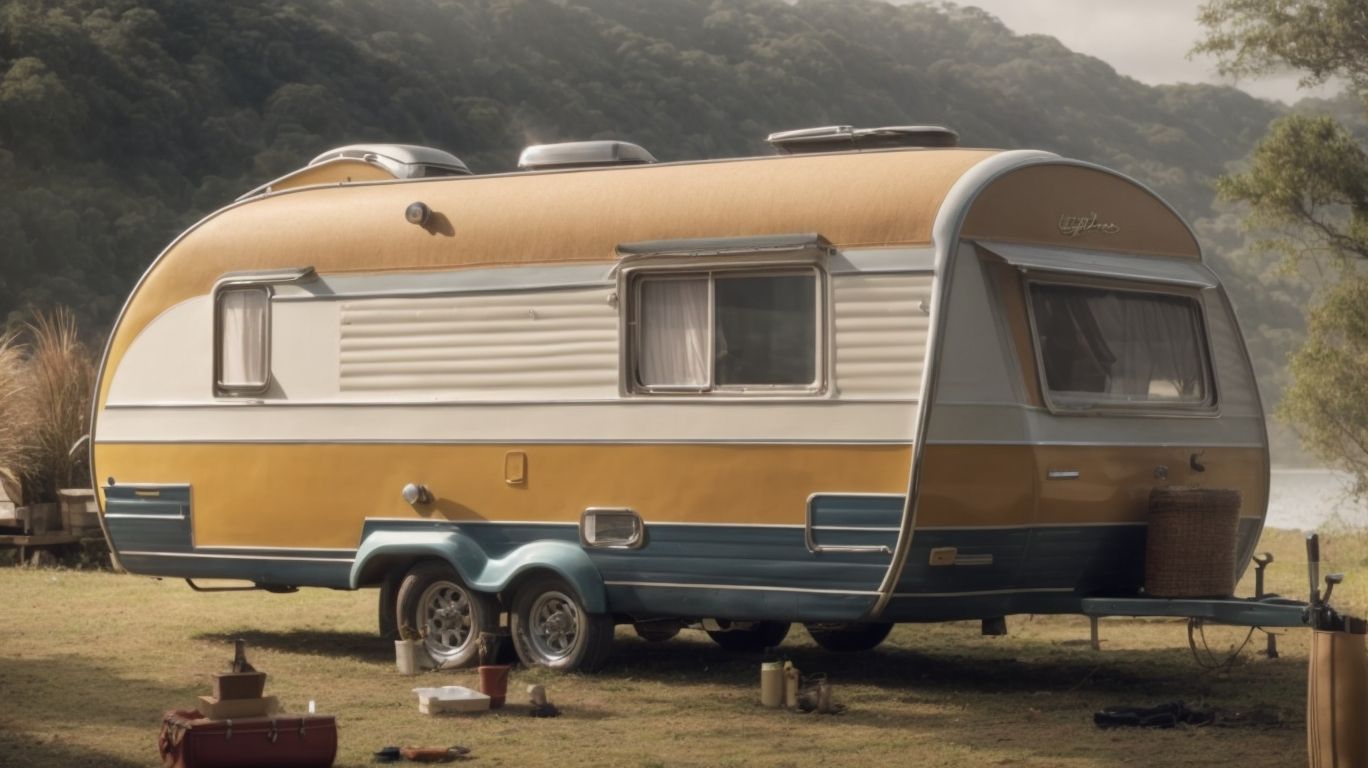
Credits: Motorcaravanning.Com – Aaron Brown
If you experience persistent wobbling issues despite preventive measures, it is advisable to seek professional help to address potential underlying problems and prevent caravan accidents.
Professional assistance should be considered if you notice abnormal shaking or bouncing while towing the caravan, as these could indicate serious mechanical issues that require expert intervention.
Ignoring recurring wobbling problems can lead to increased safety risks, affecting not only the occupants but also other road users.
Trained professionals have the expertise to diagnose and rectify the root cause of the wobbling efficiently, ensuring the caravan is safe for future travels.
Conclusion





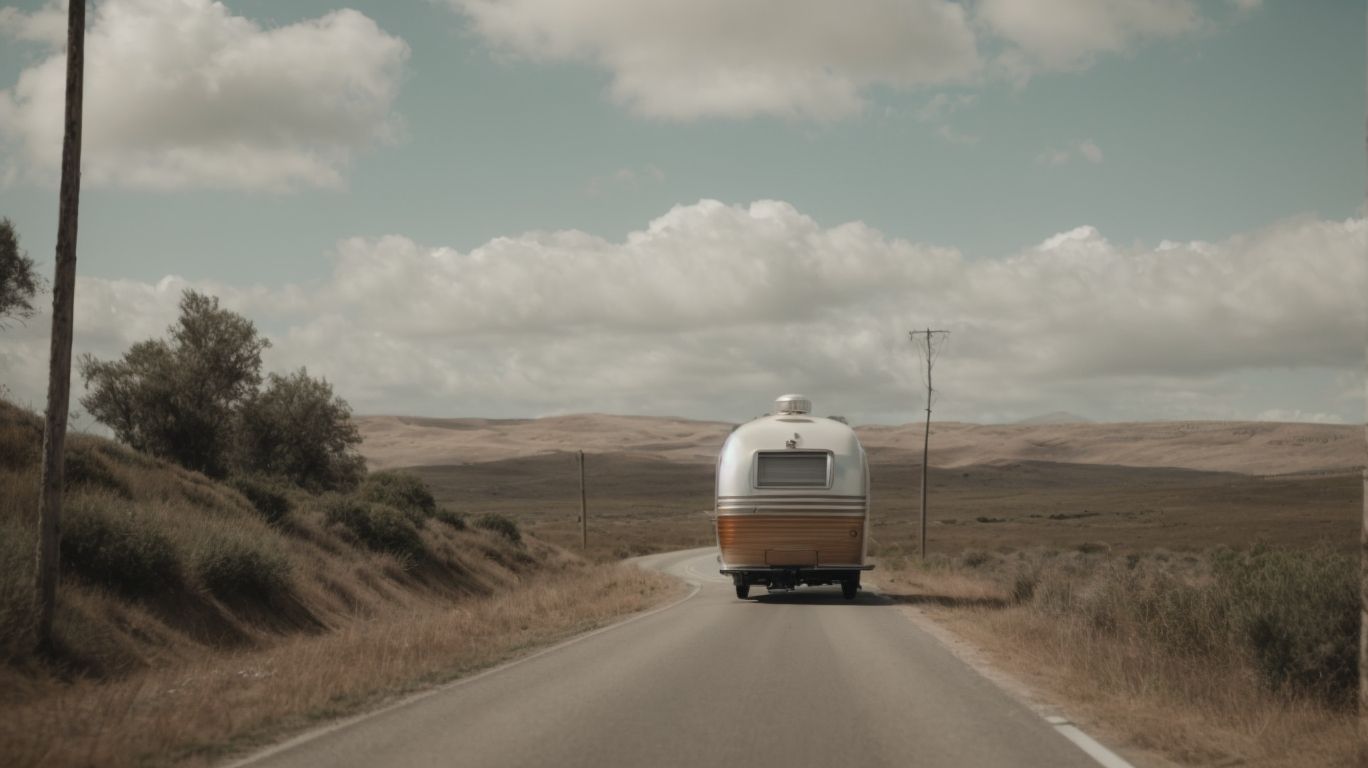
Credits: Motorcaravanning.Com – Eugene Nelson
By understanding the causes of caravan wobbling, implementing preventive measures, and prioritizing stability control, caravan owners can enjoy safer and more secure travels with minimized risks of instability.
One crucial aspect to consider for enhancing stability is the weight distribution within the caravan. Properly distributing the load can significantly reduce the risk of wobbling and swaying. Investing in quality caravan stabilizers or anti-sway bars can provide added assurance against instability during travels. Regular maintenance checks on tires, suspension systems, and towing equipment play a vital role in ensuring the overall stability of the caravan. Engaging in defensive driving practices, such as maintaining safe speeds and avoiding sudden maneuvers, further contribute to a stable journey.
Frequently Asked Questions
Why does my caravan wobble?
The main reason for a caravan wobble is due to uneven weight distribution. If certain areas of your caravan are heavier than others, it can cause instability and wobbling while driving.
How can I address stability issues in my caravan?
The best way to address stability issues is to properly distribute the weight of your belongings inside the caravan. Make sure to evenly distribute heavy items and try to keep the weight towards the center of the caravan.
Can tire pressure affect the stability of my caravan?
Yes, tire pressure plays a crucial role in the stability of your caravan. Low tire pressure can cause the caravan to sway and wobble, while over-inflated tires can make the ride uncomfortable and bumpy. Always check and maintain the recommended tire pressure for your caravan.
Is it necessary to have a weight distribution hitch for my caravan?
Having a weight distribution hitch can greatly improve the stability of your caravan. It helps evenly distribute the weight of the caravan and reduces wobbling and swaying while driving.
Can wind affect the stability of my caravan?
Strong winds can definitely affect the stability of your caravan. When driving in windy conditions, make sure to reduce your speed and maintain a firm grip on the steering wheel to prevent your caravan from swaying and wobbling.





Should I get my caravan inspected if I notice stability issues?
Yes, it is always a good idea to get your caravan inspected by a professional if you notice stability issues. They can check for any potential problems and provide recommendations to improve the stability and safety of your caravan.







